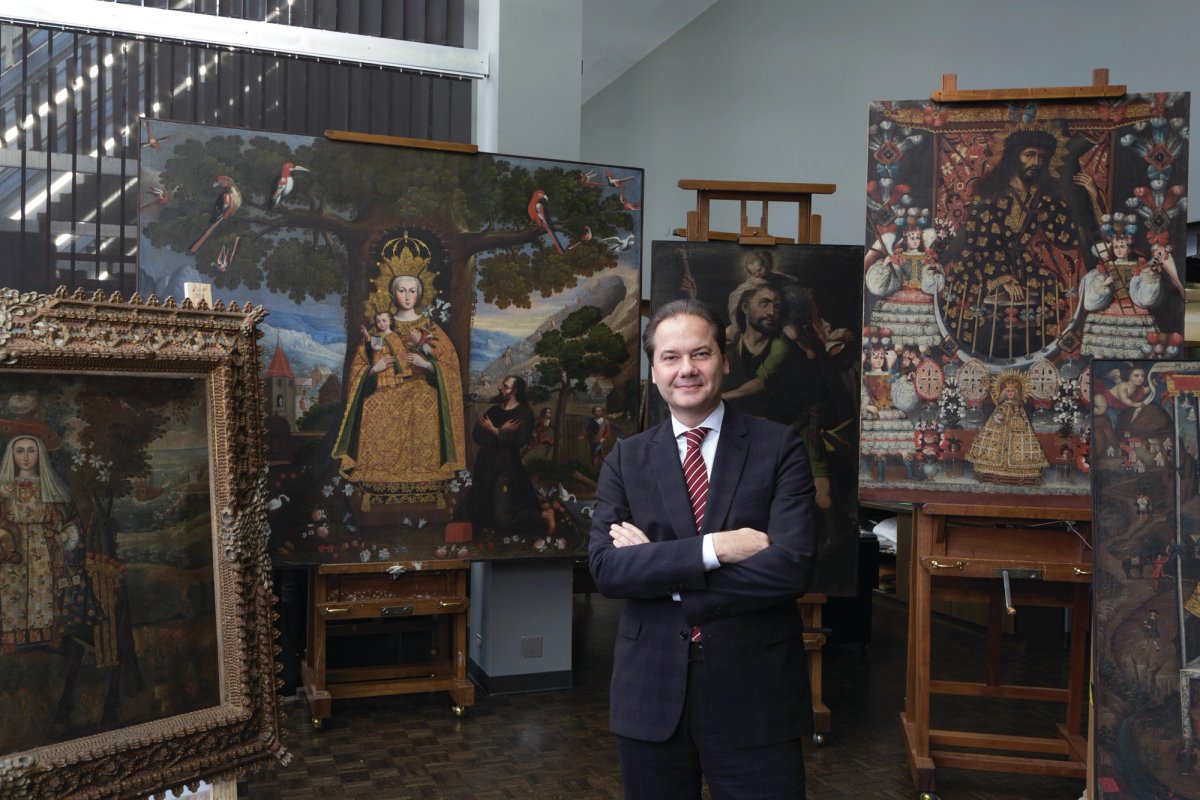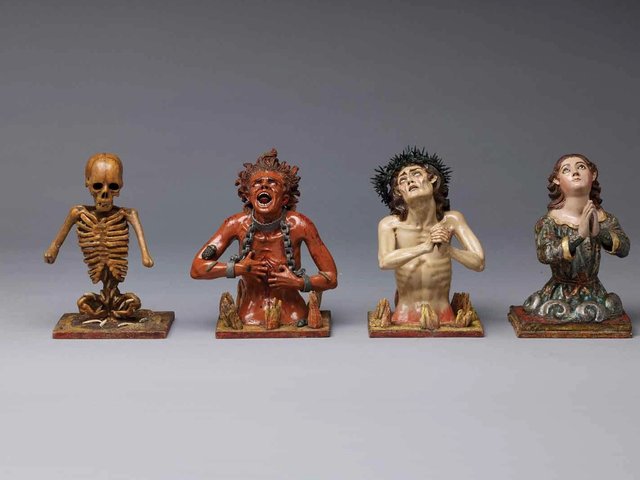It was either a dream come true or a prank: a man living in São Paulo with no previous relationship with Metropolitan Museum of Art cold-called the New York institution one day in 2017 and said he wanted to donate some of his paintings. And not just any paintings, but Spanish colonial works, a category that the Met publicly said it wanted to build up. It was not a prank, and in early March, the museum will unveil the gift from James Kung Wei Li—ten 17th and 18th century works from Peru, Ecuador and Bolivia, in a gallery in the American Wing called Art of the Colonial Andes.
“These are outstanding examples of colonial-era Andean painting, and this gift is truly a turning point in our efforts to expand our holdings of Latin American art,” the museum’s director Max Hollein said in a statement. The Met previously owned only one painting from colonial South America: Our Lady of Guápulo by an unknown 18th-century Cuzco painter, which was given to the museum in 1964.
Li, a businessman in his 80s, grew up in Latin America, the son of a Chinese ambassador who served in Brazil and other Latin American countries. He learned of the Met’s ambitions to expand its holdings from a brother living in New York City, who sent him an article about the museum’s 2015 purchase of the “Crown of the Andes”, a 17th-18th-century emerald-studded gold crown which the museum called “an anchor for the development of a new area of collection”. Li decided to help.

Crown of the Virgin of the Immaculate Conception, known as the Crown of the Andes, Colombia (around 1660, diadem, and 1770, arches)
“Our family has been on the receiving end of America’s largesse, and I thought that it would be good to repay in very small part our debt to your great nation in the form of a donation of works of art which have enchanted me for many years past,” Li wrote in an email to The Art Newspaper, explaining that his father had attended a Chinese university partially funded by the US and later the University of Wisconsin, where he earned several degrees, on full scholarship. Li and his brother also attended US schools and colleges on scholarship, culminating in a degree from Harvard Medical School for his brother and one year at Harvard Business School for himself. Then, seduced by Brazil, Li decided not to finish his master’s degree but build his business interests there instead.
Ronda Kasl, the Met curator who specialises in the art of Spanish America, said that Li “allowed us to choose what we wanted” from his trove. She first flew to São Paulo to study the collection in April 2017, along with Charlotte Hale, a paintings conservator at the museum.
Like most Spanish Colonial paintings, those in the gift are unsigned, so the museum staff had to do “hard-core research” on them, Kasl said. Of the ten paintings, only one artist was identified—Melchor Pérez Holguin (around 1660 to after 1732), a Bolivian painter who is believed to done the nocturnal portrayal of Saint Christopher (around 1710-20).
Also in the gift is Li’s favorite painting, Our Lady of Valvanera (around 1770-80) from Cuzco, which depicts the miraculous discovery of her image in the hollow of an oak tree by a thief-turned-hermit. Another beauty, Kasl said, is Our Lady of Mercy, called The Pilgrim of Quito (around 1720-30), which is “a statue painting” (a painting of a sculpture) depicting the Virgin and Child being transported on a mule led by a white-robed friar.
In a departure from usual practice, the museum is putting all the works in the gift on view before they undergo planned conservation. Each painting needs some treatment, ranging from minor fixes, which are being made before the exhibition, to major work on five or six of them that will take perhaps three years. They will be removed from the gallery one at a time, and the museum will share the findings of its conservation work with the public.
In addition to these paintings, the gallery installation—which will remain on view indefinitely—will include the crown, a newly acquired silver-bound missal published in Antwerp in 1709 and bound in Cuzco about a year later, and a silver-gilt monstrance acquired as a Spanish work in 1931 but recently conserved and reattributed to an artist from Quito.



